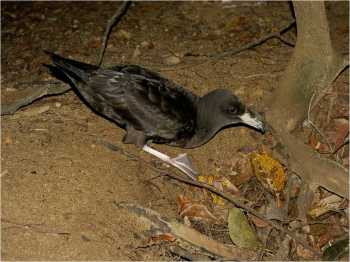Rachel Buxton and colleagues have had a paper accepted for publication in the journal Emu - Austral Ecology that uses playback of calls to assess levels of attraction of burrowing procellariids to potential new breeding sites.
The paper’s abstract follows:
“Attempts to establish seabird colonies at restoration sites using artificial visual and auditory social cues have had varying success rates, differing between sites and species. The biological mechanisms responsible for this variation are poorly understood. We used experimental call playback to test the attraction of three sympatric procellariid species to auditory social cues in northern New Zealand. To test whether the size of nearby breeding colonies affected the level of response to call playback, audio recordings were broadcast from three similar locations with varying densities of breeding conspecifics within 1 km. Grey-faced Petrel (Pterodroma macroptera gouldi) were attracted to conspecific vocalisation playbacks at all three sites and also to playbacks of other species. Fluttering Shearwater (Puffinus gavia) were only attracted to playback at two locations. Flesh-footed Shearwater (Puffinus carneipes) were not attracted to playbacks, broadcast from only one location. For Grey-faced Petrels and Fluttering Shearwaters, response to call playback increased with increasing densities of nearby breeding conspecifics, suggesting there may be a relationship between attraction and the size of nearby potential source populations. For some procellariid species call playback represents a cost-effective alternative to other active restoration approaches, such as translocation. However, we caution that its effectiveness for individual species at different sites should be assessed at the outset of restoration initiatives.”

Flesh-footed Shearwater, photograph by Barry Baker
Reference:
Buxton, R., Jones, C., Moller, H. & Lyver, P. in press. One method does not suit all: variable settlement responses of three procellariid species to vocalization playbacks. Emu.
John Cooper, ACAP Information Officer, 31 December 2014

 English
English  Français
Français  Español
Español